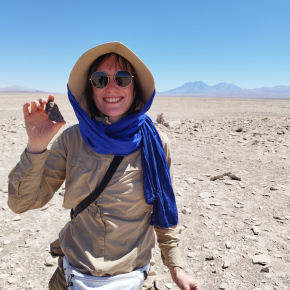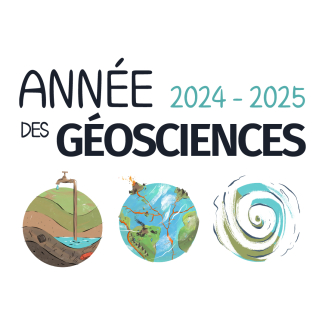Mercury Revealed? An ANR Project Explores the Hidden Origins of Aubrites
The ANR IMPAcToR project investigates a hypothesis: could the mysterious aubrites, rare meteorites, actually be fragments of the planet Mercury, which was partially destroyed in its youth? Through a multidisciplinary approach, this project aims to test this theory, which could revolutionize our understanding of terrestrial planet formation and uncover unprecedented samples of Mercury in our collections.
To learn more about the IMPAcToR project, we interviewed Camille Cartier, the project's coordinator.
CNRS: What is the focus of your ANR project?
Camille Cartier: My ANR project focuses on a very rare type of meteorite called "aubrites," with the original hypothesis that they are fragments of the planet Mercury, which was partially destroyed in its early history. Aubrites have characteristics in common with Mercury, including many exotic minerals that are not found on Earth, the Moon, or even Mars. However, until now, it has been believed that aubrites do not come from Mercury because evidence shows they are fragments of a certain type of asteroid, "E-type asteroids," located far from the Sun and Mercury, beyond Mars’ orbit.
My hypothesis is that these E-type asteroids are actually debris from the planet Mercury, which initially formed about 4.6 billion years ago, much larger than it is today, and experienced a catastrophic impact within its first million years. This event would have pulverized almost the entire rocky mantle of young Mercury. A small fraction of the debris might have traveled to the asteroid belt, becoming E-type asteroids, the current source of aubrite meteorites. The aim of my ANR project is to test this hypothesis from all angles using a multidisciplinary approach.
What key issues does this project address?
Beyond investigating an obscure family of meteorites, this project tackles several critical issues. Firstly, Mercury’s origins remain unknown. Mercury is crucial in solar system formation models because it is an extreme case: it is the closest planet to the Sun, the smallest, with the largest metal core by proportion, and the highest sulfur and carbon content. If my project's hypothesis is validated, it would mean that Mercury initially formed much larger than it is today, which would require integrating this new constraint into our models of terrestrial planet formation.
Additionally, we currently have no samples from the planet Mercury, as it is technically impossible to land a robot on its surface. The ongoing ESA space mission, BepiColombo, will collect data only via orbiters. This type of data is limited, greatly restricting our understanding of the planet. If the hypothesis is confirmed, it would mean we already possess samples of young Mercury in our collections, opening up many new possibilities. Finally, although aubrites are the rarest meteorites, they have the isotopic signature closest to that of Earth, which is currently unexplained. This project should help constrain this fundamental question in cosmochemistry.
Thus, if the proposed scenario is correct, it would imply that debris from Mercury, ejected by the impact, landed on Earth, contributing to its formation.
What will this funding allow you to do in the coming years?
This funding will allow me to assemble a small team of students and collaborators to work on the project over the next four years. The core of the project involves an exhaustive study of a collection of aubrites, with the goal of gathering the world’s largest collection of aubrites. The funding will be used to purchase meteorites, equipment to handle and preserve them, as they are extremely fragile, and to conduct a wide range of petrographic, chemical, isotopic, and magnetic analyses using various instruments (mass spectrometers, etc.) at the CRPG, as well as in other labs in Nancy.
My project also includes a significant experimental component for which the funding will be used to buy the necessary materials and consumables for experiments. Finally, the funding will support collaboration with two researchers in southern France, and allow the whole team to attend conferences to present the project's findings.


